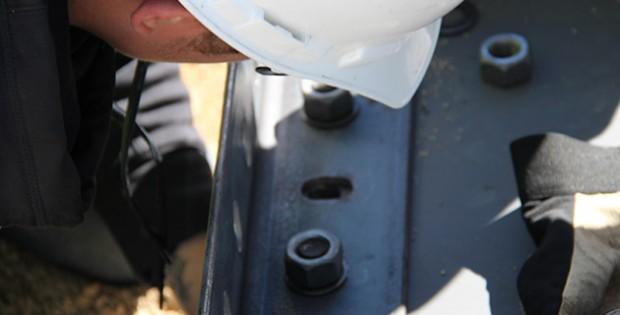Don’t Make These 3 Blunders When Buying a Steel Building

Wouldn’t it be great if every time you were about to make a purchase, someone stepped in and told you about all the things that you could do wrong when making it – especially when making a large purchase like a steel building?
The Steel Building Insider is that resource, and, believe me when I say, there are some things that you can do wrong when buying a steel building.
Granted, trained Building Experts and the Project Management Teams like the ones you’re going to encounter at Armstrong Steel are certainly going to help you avoid problems, but sometimes we come across customers who decide to start the process before consulting a professional. Occasionally, these customers find themselves in a situation that becomes very hard to correct, even for the trained professionals at Armstrong Steel.
So, before you embark on your steel building project without speaking to a professional, I wanted to detail three of the most common blunders customers make, so hopefully you don’t follow suit.
1. Pouring the foundation before you get the plans.
 I can’t tell you how many times customers decide they want a building of a certain size and decide that they are going to speed up the process by pouring concrete before engineered drawings have been provided.
I can’t tell you how many times customers decide they want a building of a certain size and decide that they are going to speed up the process by pouring concrete before engineered drawings have been provided.
Frankly, this is one of the most useless things you can do. Your steel building isn’t a typical box that just sits on top of a concrete slab. Remember, this building is going to be subjected to wind and weather loads. Engineers and detailers consider your specific geographic area when they finalize foundation and building designs.
In addition, preliminary anchor bolts patterns shouldn’t be used to pour with!
Don’t pour your concrete before you have your plans, it’s a HUGE blunder!
2. Taking delivery of a steel building before you have the proper permits.
I am going to tell you a story to illustrate this. We once had a customer who wanted to build a church addition on to his home. Problem was, he led us to believe that he had already pulled his permit so we had no reason to think he’d run into an issue with the city or county officials. This was a great goal, bringing the faithful closer to his home seemed like something that would really benefit the flock.
The building was designed and the customer gave us the OK to put the order into the fabrication schedule. The building was delivered (and engineered SPECIFICALLY for that location as every Armstrong Steel building is), the customer went to pull his permit and discovered his neighborhood wasn’t zoned for such a structure.
OOPS! HUGE blunder!
Once the building gets to the fabrication phase, there’s no turning back. Although Project Managers will help you with permitting, ultimately, the permitting process is the responsibility of the buyer. When a customer tells us that they’ve already pulled their permit we adopt a hands off approach. Indeed, countless customers are familiar with the process and don’t need our help.
But when several tons of pre-engineered steel arrives at your doorstep, you take delivery and then realize after the fact that you can’t pull a permit, you’re kind of stuck. Remember, each steel building is engineered specifically for it’s job site location, so it’s not like you can just erect it somewhere else.
The way to avoid this is to pay for permit drawings ahead of time – a small percentage of the total cost of the building. Pull your building permit with professional DRAWINGS. It is significantly less expensive to make changes which will pass the permitting process at the drawing stage.
If you wait until you’re at the fabrication and delivery stage, you run the risk of making a HUGE blunder!
3. Buying from a company without an in-house engineering or detailing department.
OK, so, maybe you’ve actually waited and have consulted with a company you consider to be professional. Maybe they are. But maybe their engineering or detailing is done overseas by engineers and detailers you may never have the opportunity to speak with or maybe they’re individuals your salesman has never even met.
Sounds crazy, right? But it happens. The benefit of an in-house detailing team is two-fold. First, it allows you to make changes to your plan, or adjustments to your plan based on your changing needs or wants, or a change in the structural code of your area, or even because of budget – and it allows you to make these changes in hours or days rather than weeks. In the construction process, time is of the essence. Steel prices may change, seasons change (allowing you only certain times to build), and contractors may change their quotes based on how long it takes you to complete your project. Time IS money.
The other benefit is that when it comes time for erection, you’re going to want a professional to speak with in case you have problems or questions. Who better to speak with than the person who actually engineered the building. No one knows your building as intimately. An in-house engineering department allows you access to speak with the detailer or engineer directly.
Deciding to go with over-seas engineers with no real accountability is a HUGE blunder!
I don’t want to scare you. The steel building process is relatively easy – when you do it the right way. That means, you speak to a Building Expert first, then work with a Project Manager through the process. When you do it that way, the only HUGE blunder you can make is thinking you CAN’T do it! Because, you can!
Photo courtesy: hobvias sudoneighm, Life of Pix« Five Established Models For Multi-Site Church Ministry
4 Signs It’s Time To Expand Your Home-Based Business »
Popular Posts

Inductive Battery Charging has made its way into the power tool world, and Bosch leads the “charge” into the industry. You might be familiar with inductive, or wireless charging with your smartphone or toothbrush. It’s the same technology at work here. The premise is relatively straightforward. Inductive charging uses an electromagnetic field to transfer energy… …

As you may have seen, there are incredible differences in quality throughout the pre-engineered metal building industry. You might have witnessed it yourself so far as you do your research into steel building companies, or you might have some experience after speaking to friends, neighbors or the professionals. The truth is, even after you make the… …

